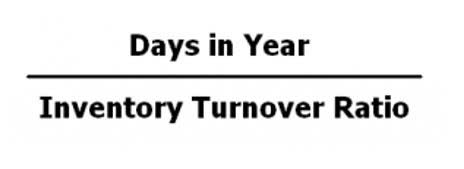We try our best to keep you with the bookkeeping team you’re assigned when you come on board. If there’s any change in your bookkeeping team, we’ll let you know as soon as possible and make sure the transition is a smooth one. Our platform allows you to automate data inputs from most major providers to avoid common mistakes. We partner with merchants like Gusto, Stripe, Shopify, and Square—so your finances are always accurate.
Payroll Services for Small Business
Get out of the weeds and focus on strategic projects that move your business forward. With up-to-date books, know your tax liability in advance and avoid surprises. Know how your business is performing with financial reports delivered to your inbox monthly. QuickBooks and other bookkeeping software give you a tool to do your own bookkeeping. Simplify the process and get the maximum refund you’re entitled to.
Stay Updated
Our accounting services include the preparation of detailed financial statements, giving you a comprehensive view of your business’s financial performance. When you inquire about locating Small Business CPAs Near Me or CPAs near me for tax services, Continental Accountants CPAs is undoubtedly your top choice. Small businesses are the backbone of our economy, and we take pride in being the go-to CPAs near you for small business services. Our tailored solutions include small business tax preparation, payroll services, and strategic financial planning. At Continental Accountants CPAs, we understand the importance of finding CPAs near you who specialize in taxes.
- Get quick & thoughtful responses from a single point-of-contact who understands the full picture of your personal and business finances.
- On this call, we’ll connect your accounts to Bench, and gather any extra documentation we need to complete your books.
- As a proud Latino-owned business, we specialize in providing personalized and professional tax services to individuals, families, and small businesses in our community.
Capital Balance Bookkeeping – Arlington Bookkeeping
We look forward to helping your business achieve its financial goals with our professional, personalized services. Connect with us today and take the first step towards streamlined and stress-free financial management. Capital Balance Bookkeeping has extensive experience serving a wide range of industries. Whether you are in retail, hospitality, technology, or any other sector, we have the expertise to handle your specific industry demands. With a deep understanding of the regulatory and financial challenges faced by various sectors, we are equipped to provide you with the best possible bookkeeping solutions. We take a proactive approach to tax planning, helping you make informed decisions that positively impact your financial situation.
Tax Filing Season
At Continental Accountants CPAs, we understand the intricate financial landscape of small businesses and offer tailored accounting solutions to ensure your financial success. Our team of certified public accountants (CPAs) brings more than 22 years of extensive expertise in small business accounting. From bookkeeping to financial analysis, we have the knowledge and skills to handle every aspect of your business’s financial health. We recognize that each small business is unique, and there is no one-size-fits-all solution. Our approach involves understanding your specific needs and tailoring our accounting services to align with your business goals. Clear and accurate financial reporting is crucial for making informed business decisions.
Continental Accountants CPAs is more than just an accounting firm—it’s a commitment to your financial prosperity. Explore our range of services, meet our expert team, and embark on a journey towards financial excellence with confidence and clarity. We’re here to navigate the complexities of finance while you focus on what matters most – your success. Bench simplifies your small business accounting by combining intuitive software that automates the busywork with real, professional human support.
- Navigating the complex landscape of nonprofit audit services requires a specialized approach.
- The end result is a set of accurate financial statements—an income statement and a balance sheet.
- Nonprofit organizations have distinct tax obligations, and compliance is crucial.
- Our team of pros is familiar with Virginia tax rules and will customize their approach to your business’ unique needs.
Keep financial info up-to-date with weekly transaction imports into your accounting software. High-technology businesses in Arlington may qualify for reduced tax rates when obtaining their business license. Augur CPA is an adaptable, trustworthy solution for your financial back-office. Unlock efficiency with a comprehensive solution for your back-office.
Bookkeeping & Tax
The end result is a set of accurate financial statements—an income statement and a balance sheet. At MGP, we are committed to empowering our community by providing reliable financial guidance. Whether you’re filing your taxes for the first time or managing a growing business, we are here to help every step of the way. Beyond just offering bookkeeping services, we at Capital Balance Bookkeeping are committed to contributing positively to our community. We engage with local businesses and participate in community events, striving to make Arlington not just a place of commerce, but a vibrant community enriched with mutual support and growth.
Let Capital Balance Bookkeeping be your guide to simpler and more effective financial management in Arlington, VA. Tax & financial strategy for entrepreneurs looking to grow their businesses. Don’t overpay for the financial reporting your business needs to grow. Get quick & thoughtful responses from a single point-of-contact who understands the full picture of your personal and business finances. Tax-ready financials and monthly reports to keep you informed about financials.
Let Continental Accountants CPAs take the burden off your shoulders with our efficient payroll services. At Continental Accountants CPAs, we don’t settle for the status quo. We believe in continuous improvement, ensuring that our services evolve to meet the ever-changing financial bookkeeping arlington landscape. Our commitment to staying updated with the latest tax laws, industry trends, and regulatory changes ensures that you receive cutting-edge solutions and guidance. For businesses and organizations requiring audit services, Continental Accountants CPAs stands as a beacon of trust and reliability. Our audit professionals possess the expertise to conduct thorough and precise audits, ensuring financial transparency and compliance with industry standards.
Each month, your bookkeeper organizes your business transactions and prepares financial statements. Get free guides, articles, tools and calculators to help you navigate the financial side of your business with ease. Nonprofit organizations have distinct tax obligations, and compliance is crucial. Our CPAs specialize in nonprofit tax returns, ensuring that your organization remains in good standing with the IRS. We work closely with nonprofits to maximize available exemptions and deductions, allowing them to allocate more resources toward their mission.
Whether you are a small startup or a well-established business, our tailored solutions are certain to meet your unique needs. Bench is proud to offer bookkeeping services to businesses across the United States. We are here to help you streamline your accounting needs efficiently and effectively. Managing payroll can be a time-consuming task for small business owners.
Navigating the complex landscape of nonprofit audit services requires a specialized approach. Our dedicated team at Continental Accountants CPAs has extensive experience in conducting audits for nonprofit organizations. We understand the unique challenges and compliance requirements faced by nonprofits and are here to provide comprehensive audit services that uphold the integrity of your organization. At Capital Balance Bookkeeping, we understand that managing the financial aspects of your business can be a daunting task, especially when you would rather focus on growing your company. Located in the vibrant community of Arlington, VA, we provide top-notch bookkeeping services designed to keep your finances in impeccable order.
Detailed accounting & bookkeeping procedures are invaluable for you, and are the true measures of success for your business. Don’t forget – you are required by the government to keep accurate and precise records of all your business transactions. If you have employees, the government requires payroll and tax compliance records. Let me help you with these tedious and often overwhelming but NECESSARY tasks. “Tax-ready” refers to the level of quality that we aim for through our accounting and bookkeeping services.




